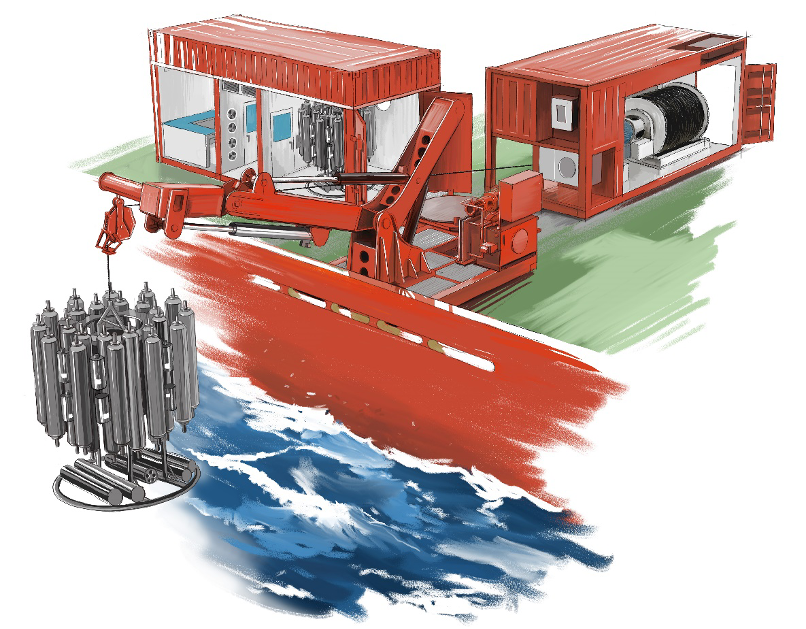MOTES: a new facility designed for trace element sampling in seawater
Zhang and a group of engineers and researchers from Shanghai and Qingdao (2024, see reference below) are presenting the modular trace element sampling facility that they have developed (MOTES). Vertical profiles of lead and iron, two trace metals particularly prone to contamination, are also shown to attest the reliability of MOTES.
The advantages of MOTES are that the improved Niskin-X sampling bottles could remain closed on the deck and open underneath the sea surface, and there is no need to remove and assemble the samplers during the whole process of sampling and filtration. Above the titanium CTD frame the Niskin-X bottles installed on, there is only a plastic-coated coaxial communication cable (12000 m) to minimize disturbance to the water column and potential contamination in the up-cast lift. There are three modular components in the facility, the winch system, the clean room and the L frame. The stainless-steel winch system and the clean room dedicated to sampling, and sample transfer and filtration are both installed in the standard-sized clean container which are very convenient to move. The hub part of winch system which contact with cable is cladded by nylon to avoid potential contaminations. The L frame system is installed in the 10 ft standard-sized container base. Last but not least, the three modular components can be detached for land transportation and reassembled on the deck of research vessels for sea-going cruises. Note also that the design concept can be adapted for other types of applications in a sea-going voyage, such as ships/cargo vessels and observational platforms, which require clean working conditions and must be self-sustaining in remote areas/situations.

Reference:
Zhang, J., Ni, Z. T., Ren, J. L., Yu, F., Diao, X. Y., Wang, Y., Zhang, S. J., Su, H., Cong, S. L., Lu, Z. J., Jiang, S., Ou, J., Chen, Y., Wang, Q., Zhang, Z. B., Ai, J. T., Wang, C. B., & Tao, Z. D. (2024). Modular ocean trace elements sampling for the international GEOTRACES studies – Evidence from analysis of dissolved Fe and Pb. Progress in Oceanography, 221, 103212. Access the paper: 10.1016/j.pocean.2024.103212
